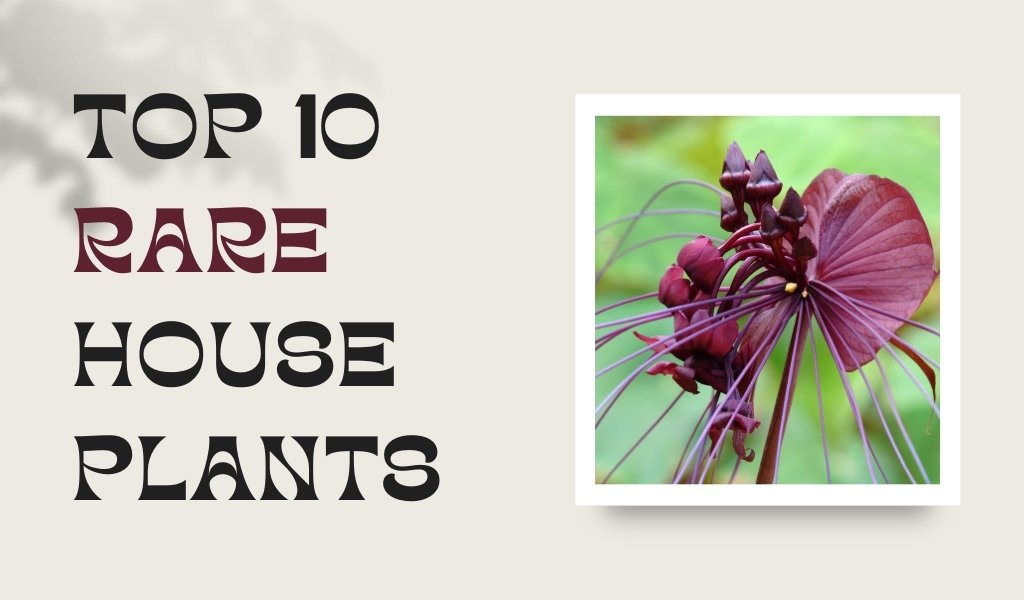Gardening is regarded as one of the world’s most enjoyable hobbies. Gardening has its own sets of benefits, from keeping you worry free to promote a safe climate. If an individual continually participates in gardening and other similar practises, he is closely connected with them and knows most of the plants. Here, then let’s talk about THE TOP 10 MOST APPRECIATED RARE HOUSEPLANTS.
1). Night Blooming Jasmine (Cestrum nocturnum)
This is the most aromatic rare houseplant on this list and one you should certainly consider (as well as one of my favourite ones)! The glossy dark green leaves are lovely, but it’s the tiny white flowers that make this plant truly unique. They have a heavy, rich, and romantic scent when they open at night! These are thirsty plants (especially as the weather gets hotter), so make sure the soil dries out between waterings. The Night Blooming Jasmine adores the light! So make sure you put this plant-baby in a bright window.
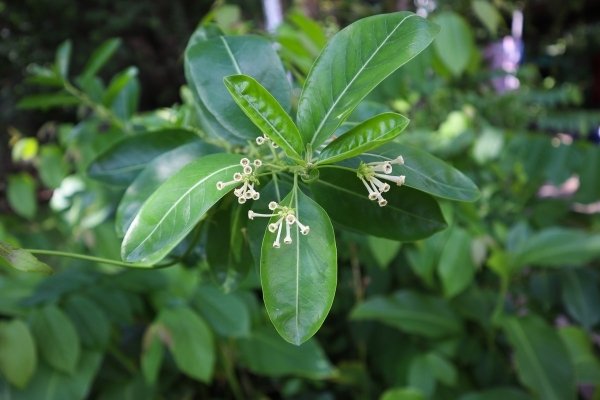
2). Black Bat Flower (Tacca chantrieri)
This is one of the craziest flowers you will ever see! There aren’t many black roses! But the Black Bat Flower is breathtaking! This plant blooms from late summer to autumn, which means it will likely be blooming around Xmas! This is a tropical plant that does not like conditions below 60 degrees. Don’t expose it to intense sunlight. It would also thrive on a northerly windowsill (a great low light plant). As usual, don’t overwater this one. Allow the soil to dry in between watering.
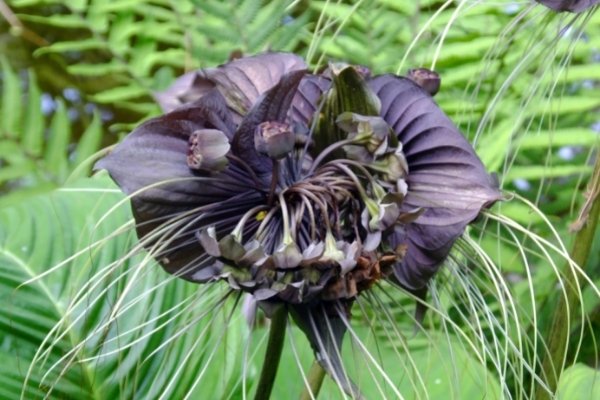
3). Pencil Cactus ‘Firesticks’ (Euphorbia tirucalli)
Of such numerous forms and sizes, cacti come. That’s one of the most extraordinary! The Cactus Pencil is known for… yeah, it looks like a bunch of pencils! Please take note of its sap because it could be poisonous (not a pet-friendly plant). It prefers sunny locations, so it’s best to have a south window. Ensure that you use cactus soil just a few times a month and water it only. Drain the water completely until it flows out from the bottom of the container after watering.
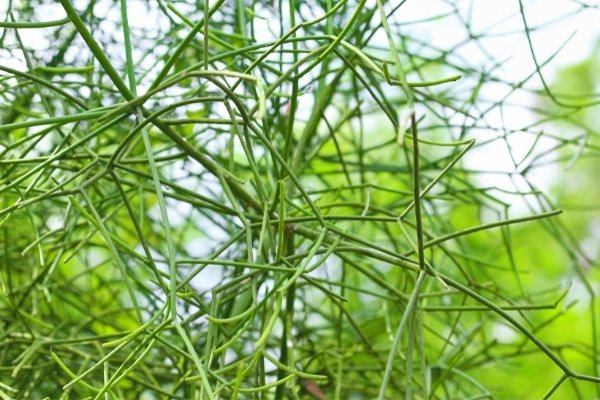
4). Paddle Plant (Kalanchoe thyrsiflora)
A paddle plant with less succulency is a little cluster of broad, carnelized leaves from a central rosette. Each leaf grows up to 6 inches in length and partially overlaps with nearby leaves, such as a pancakes stack, which defines its other common name: flapjacks. The leaves are grey-green, but as the sun is revealed, the edge becomes flashy red. In contrast, paddles mature after 3 to 4 years and have aromatic yellow flowers. After they bloom, they die. However, the mother plant produces several offsets so that you can start again. Place the paddle plant in a cactus in a place mixed with plenty of sunshine to keep it happy.
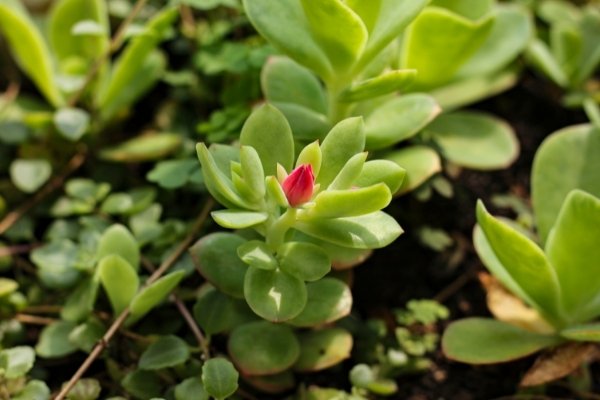
5). String of Dolphins (Senecio peregrinus)
Maybe you’ve heard of a string of pearls or a strand of beads? The line of dolphins, a succulent that looks like dolphins leaping around the trailing branches, comes from the same plant family. A string of dolphins is a cross between a string of pearls and a candle plant that grows bent leaves with two tiny points in the middle that mimic fins. Offer string of dolphins plenty of light in a hanging basket and encourage the soil to dry out between watering.
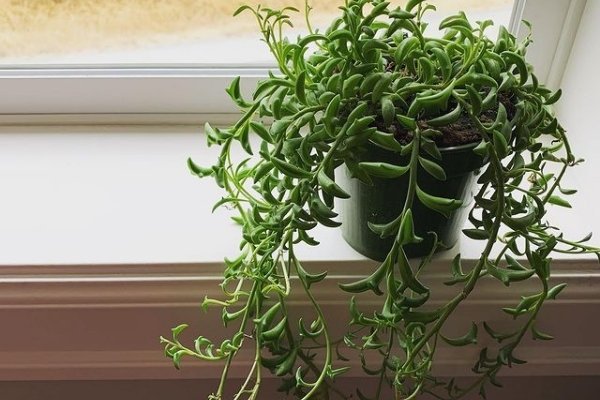
6). Pitcher Plant (Nepenthes ventrata)
The pitcher plant is a carnivorous plant native to the Philippines that uses oblong pitfall traps dangling from tendrils attached to its plain green leaves to catch flying and crawling insects. By nectar secreted on the underside of the trap’s lid, the pitcher plant attracts creepy crawlies. Insects find a way into the pitcher and sink in the liquid below. Bugs are eventually digested by enzymes, which provide essential nutrients to the plant. The pitcher plant can thrive if it receives plenty of sunshine, warmth, and humidity. Light soil made up of half sphagnum moss and half perlite pitcher plants is modified to catch their nutrients.
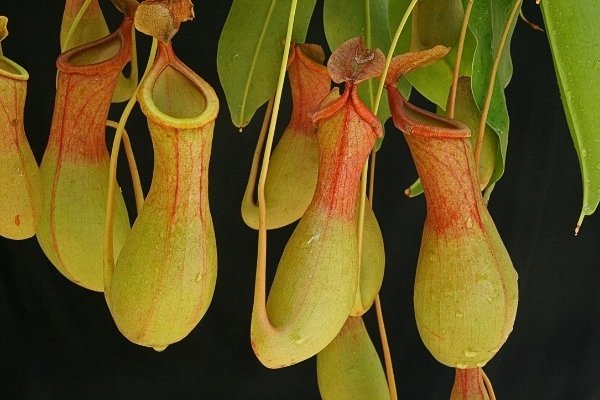
7). Lavender Scallops (Kalanchoe fedtschenkoi compacta)
Lavender scallops is an unusual beauty known as Bryophyllum fedteschenkoi with upright, fleshy, creamy and green leaves, whose edges are scalloped and turned pinkish-red in bright light. Lavender scallops grow in plenty of sunshine and no water since they are succulent native to Madagascar. Therefore, this plant should be very easy to care for, even for those with black thumbs!
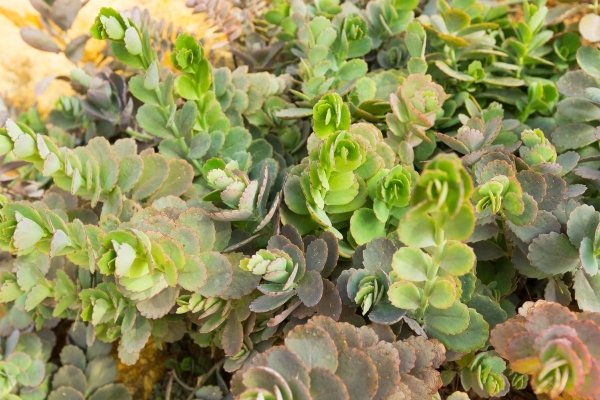
8). Desert Rose (Adenium obesum)
A succulent African evergreen bush, a desert rose is also a charmer. Desert can be cut in bonsai style into a miniature tree or encourage it to grow naturally to a high of around 10 metres with a swollen trunk, woody roots, leathery green leaves, and flowers ranging in colour from red to pink. Despite its complex nature, it is easy to look after desert roses. Little water is required to prosper because it comes from semi-arid climates. However, it needs lots of suns. If temperatures fall under 50°F, the leaves can fall. Potted up inside near a South Window, the desert rose should certainly flourish and be content.
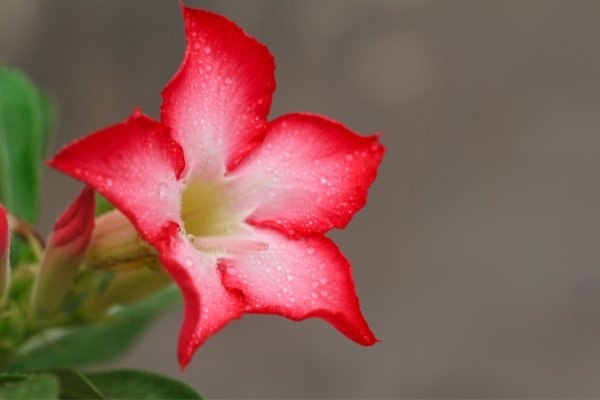
9). Madagascar Palm (Pachypodium lamerei)
Although Madagascar’s palm looks like a cross between a palm tree and a cactus, it’s a succulent dogbane family. Madagascar palm, its silverside, stubborn trunk and the crown of green leaves can grow in the wild 20 feet high, but when potted indoors, it can dwarf to a size of fewer than 6 feet. He’s still a late grower, but you’re going to see it mature for several years. Just like other succulents, place Madagascar palm in the light and water sparingly. Use strong drying soil, like cactus soil, and fertilise every 5 weeks in spring and summer with a solution of low nitrogen.
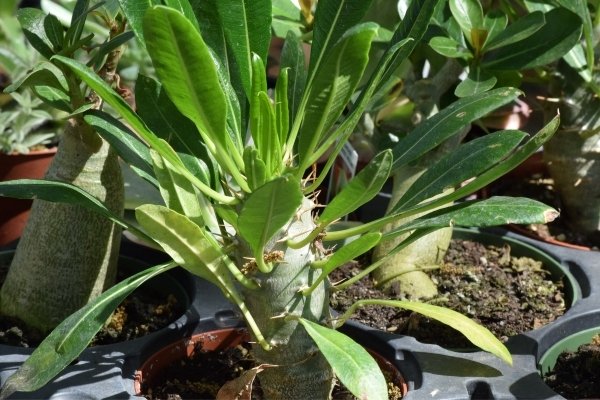
10). Living Stone (Lithops)
Lithops, a succulent native to southern Africa, is also called living rock. The plant looks like caverns or bricks, with grey, green, red, brown, orange and even pink. The lithops are small enough to grow on a window or patio table. Thus, an exceptionally natural element is brought to every room through its collection.

If you want to take the indoor gardening game to the next level and go past the beautiful – but common plants? These unusual houseplants listed above will not only liven up your living room but will also add a splash of colour or an interesting texture to the decor.

